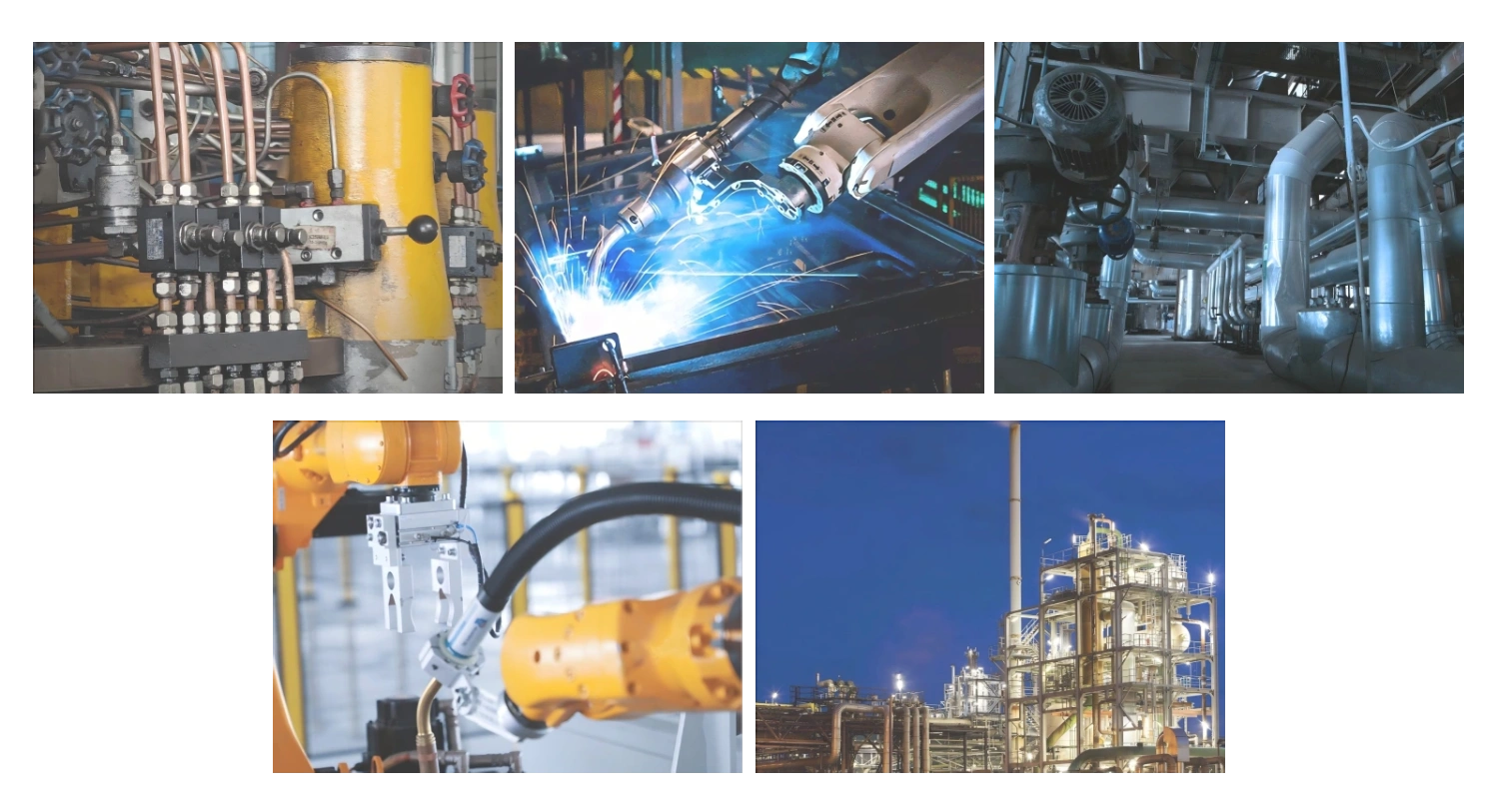Understanding Standard Rubber Parts Solutions
Common Applications of Standard Rubber Components
Rubber parts show up everywhere from cars to planes because they just work so well for so many different things. Take the automotive world for instance rubber seals, those little O rings and gaskets basically keep engines running right by stopping unwanted leaks and keeping pressure where it needs to be. Up in the skies, airplanes rely on similar rubber bits too. These components help make sure critical systems stay reliable when flying at 35,000 feet where failure isn't an option. Doctors and nurses depend on rubber stuff all the time in hospitals. Think syringes, surgical gloves anything that needs to create an airtight seal while staying sterile. And let's not forget factories across the country where rubber grommets and other parts shield machinery from damage and wear down over time. Without these humble rubber pieces, countless machines would break down much sooner than they do.
Take car engine gaskets and those seals in household appliances for instance they really show how tough and dependable rubber parts can be when put through daily wear and tear. When it comes to industrial equipment like water pumps, manufacturers often depend on these same rubber components because they make things run smoother and require less downtime for repairs. The fact that rubber gaskets work so well across such different applications means that getting good at cutting them properly matters a lot for anyone working in manufacturing or repair shops where precision meets practicality head on.
Material Selection for Off-the-Shelf Rubber Parts
Picking the correct rubber type really matters when it comes to how well standard rubber parts perform over time. There are several common choices out there like natural rubber, EPDM, Nitrile, and Neoprene, each bringing something different to the table based on what the part needs to do. Take natural rubber for example it stretches a lot which makes it great for parts that need to flex constantly. On the flip side, EPDM stands up pretty well against both heat and weather damage, so many manufacturers use it for things that sit outside or get exposed to extreme temperatures regularly. The difference between these materials can make or break a product's lifespan in certain conditions.
When picking materials for a job, temperature resistance, chemical exposure potential, and hardness levels need serious consideration so they work well in their actual environment. Take nitrile rubber for instance it works really well when there's oil or fuel around because of how it resists those substances. Industry standards from groups like ASTM or ISO aren't just nice to know stuff either these guidelines actually help point people toward better choices while making sure everything meets necessary specs. The right rubber choice can cut down on problems down the road and keep parts performing properly even under tough conditions. Most engineers will tell anyone who asks that getting this part right makes all the difference between something lasting years versus needing replacement after months of service.
Rubber Gasket Cutting Techniques for Industrial Use
When making rubber gaskets, getting the cutting right makes all the difference between good quality parts and wasted materials. There are several ways to cut these components depending on what exactly needs to get done. Die cutting works great when companies need thousands of identical pieces fast, which explains why so many manufacturers stick with this approach for their regular orders. Water jets come into play when there's something special required, maybe unusual shapes or materials that can't handle traditional methods. And then there's CNC machining, which gives operators fine control over every detail but costs more time and money upfront. Most shops will pick whichever fits best with their current workload and budget constraints.
Water jet cutting really shines when dealing with complicated shapes and detailed work that needs exact measurements. It's great for those specialty jobs where getting every detail right matters a lot. Then there's CNC machining which works wonders for tricky shapes and forms. Many manufacturers rely on it to make custom gaskets that fit specific machinery or equipment in different factories. When companies take the time to understand both methods, they can pick what works best for them financially while still meeting their production goals. The right choice makes all the difference in final product quality and how smoothly operations run day to day across various manufacturing sectors from automotive to aerospace.
Addressing Unique Machinery Requirements
When off-the-shelf rubber parts just won't cut it for certain machines, custom components step in to fill the gap. This happens all the time because many industrial applications need parts with odd shapes, non-standard dimensions, or ones that can handle extreme conditions regular parts simply aren't built for. Take sealing solutions for example. High pressure systems often demand something completely different from what's available in catalogs. The same goes for medical devices where regulations require custom gaskets that pass strict testing protocols. Real world experience shows that working closely together is absolutely critical for getting these right. Engineers know exactly what specs matter most while manufacturers bring their expertise about material properties and production limitations. Their combined knowledge leads to better designs that actually work under real operating conditions rather than just on paper.
Machine Auto Rubber Gasket Customization Scenarios
For cars on the road today, custom made rubber gaskets are really important when it comes to hitting those exact measurements needed by car makers or boosting how well engines work. When manufacturers need these special parts, they often ask for things like valve cover gaskets or intake manifold gaskets that fit right into the car's design so everything works properly. Knowing what each type of car needs specifically matters a lot for making good quality rubber gaskets. These customized parts help make sure cars last longer and run better overall. Most mechanics will tell you that getting the right fit between all those metal components makes a world of difference in how smoothly a vehicle operates day after day.
Regulatory Compliance in Specialty Applications
When making custom rubber parts, companies need to follow strict rules across different industries. The aerospace, medical, and food processing fields have some of the tightest requirements because these products directly impact people's lives. Regulations basically exist to make sure nothing bad happens to health or contaminates what we eat or use medically. Take medical devices for example - getting FDA approval isn't just paperwork; it means testing materials so they won't cause allergic reactions or release toxins over time. Working with compliance specialists right from when designs start saves money later on. We've seen too many cases where companies had to completely redo parts after spending months developing them only to find out they missed some obscure regulation. Getting this right early makes everything run smoother down the line and keeps everyone safe without unnecessary delays.
Advanced Manufacturing Techniques for Rubber Parts
Injection Molding with Used Rubber Injection Machinery
Injection molding continues to be a go to approach for making rubber components quickly, especially when shops opt for secondhand or refurbished machines. Going this route cuts down on manufacturing expenses quite a bit, which matters a lot for businesses watching their bottom line closely. Getting these older machines properly calibrated and kept in good working condition makes all the difference though. Without regular maintenance, the parts just won't match what comes off newer equipment. What makes injection molding so appealing? For one thing, it lets factories crank out parts at impressive speeds. Plus, it handles intricate designs that would be tough to achieve with other methods, meeting demands across different sectors. Big manufacturers really benefit from this process since they need to turn around components fast without compromising on quality or strength requirements.
Compression Molding for Complex Geometries
Compression molding remains a go-to approach when making complex shapes in rubber components, particularly for pieces that just won't work with injection molding techniques. The process shines when dealing with big, heavy parts like industrial seals and gaskets where consistent thickness throughout and solid structural integrity matter most. When manufacturers get a handle on how materials actually move during compression, they can tweak designs to make sure every part performs reliably over time. Many sectors need specialized components that fit exact requirements, and compression molding delivers these quality parts consistently. This makes all the difference in applications where reliability counts, from automotive systems to heavy machinery operations.
Rubber-to-Metal Bonding for Hybrid Solutions
Bonding rubber to metal remains essential when making those tough hybrid parts that bring together rubber's stretchiness with metal's toughness. We see this combo all over the place, especially in those vibration damping mounts found in cars and heavy machinery across factories. How well these mixed material parts work really hinges on what kind of bonding technique gets used. Some folks go for chemical adhesion while others prefer mechanical fasteners depending on what works best for their particular application. Getting the right bond matters because it determines how long these parts last through different working conditions without falling apart. For manufacturers looking to boost machine performance and cut down on breakdowns, these hybrid components offer real value by standing up to tough environments where both give and take are needed from materials.
Critical Applications Across Key Industries
Automotive Sealing Solutions: From Gaskets to Stuffing Boxes
Sealing solutions play a vital role in keeping vehicles free from leaks across the automotive industry. We see everything from standard gasket materials all the way up to modern rubber stuffing systems being employed throughout vehicle construction. The rubber parts specifically help cut down on harmful engine emissions and boost how efficiently cars consume fuel, which directly supports what many automakers are trying to achieve environmentally speaking. Environmental regulations keep getting stricter year after year, so car makers need to spend money on better quality seals if they want to stay compliant. When manufacturers get their hands on good sealing tech, not only do they pass those tough emission tests, but engines actually run smoother too, giving consumers something worth paying attention to when shopping for new rides.
Industrial Valve Components and Rubber Stuffing Box Designs
Rubber plays a crucial role in making industrial valve parts because it seals well and absorbs shocks pretty effectively. Take rubber stuffing boxes for instance these are made from quality rubber compounds that help valves last longer and work reliably even when things get tough in industrial settings. When putting together valves, manufacturers need to look at what specific applications require different rubber grades and design choices matter a lot here. Getting this right means valves will keep functioning properly for years instead of breaking down unexpectedly. The extra care pays off big time since it cuts down on maintenance costs and downtime across various industries where reliable valve operation is absolutely essential.
Medical-Grade Rubber Parts for Precision Equipment
Rubber components used in medical applications must pass strict quality checks to avoid any risk of contamination, since these parts directly impact both patient health and how well medical equipment works. Take syringe gaskets or seals on surgical instruments for instance – even small manufacturing flaws can lead to serious problems. Meeting regulatory requirements means going through extensive material testing and process validation procedures. Manufacturers spend countless hours ensuring their production lines consistently deliver parts that perform exactly as needed. The whole point of this meticulous approach is simple: when doctors rely on medical devices during critical moments, they need absolute confidence that everything functions properly without fail. That kind of reliability protects not just individual patients but also maintains trust across the entire healthcare ecosystem.
Table of Contents
-
Understanding Standard Rubber Parts Solutions
- Common Applications of Standard Rubber Components
- Material Selection for Off-the-Shelf Rubber Parts
- Rubber Gasket Cutting Techniques for Industrial Use
- Addressing Unique Machinery Requirements
- Machine Auto Rubber Gasket Customization Scenarios
- Regulatory Compliance in Specialty Applications
- Advanced Manufacturing Techniques for Rubber Parts
- Injection Molding with Used Rubber Injection Machinery
- Compression Molding for Complex Geometries
- Rubber-to-Metal Bonding for Hybrid Solutions
- Critical Applications Across Key Industries
- Automotive Sealing Solutions: From Gaskets to Stuffing Boxes
- Industrial Valve Components and Rubber Stuffing Box Designs
- Medical-Grade Rubber Parts for Precision Equipment







